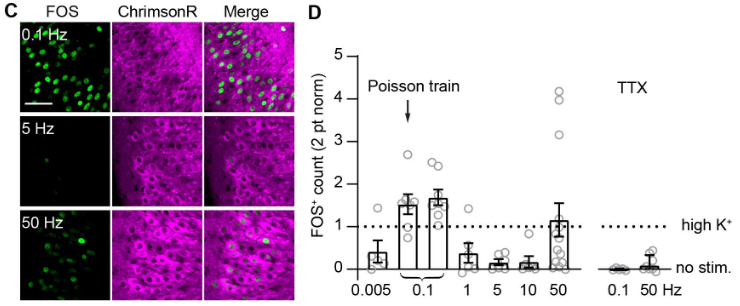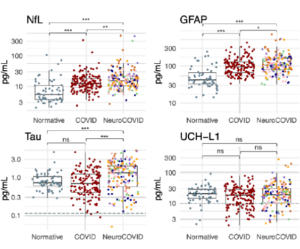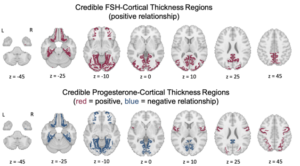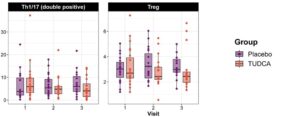
“Neuronal FOS reports synchronized activity of presynaptic neurons.”
Margarita Anisimova, et al. – University Medical Center Hamburg-Eppendorf.
This study found that FOS is not simply a reporter of neuronal activity, as has it has been considered for decades. Rather than scaling directly with stimulation frequency, FOS expression is strongest in CA3 neurons that are stimulated at 0.1 Hz, with intermediate frequencies failing to stimulate FOS. FOS expression in this context is due to signaling from metabotropic glutamate receptors, and can occur when action potentials are silenced, making it a reporter of receiving excitatory input as opposed to neuronal firing. CA2 neurons, meanwhile, express FOS more weakly than CA3 neurons, reflecting a previously-uncharacterized cell-type specificity. The authors posit that in the hippocampus, FOS expression may mark cells that are participating in synchronous, periodic activity such as sharp-wave ripples.






